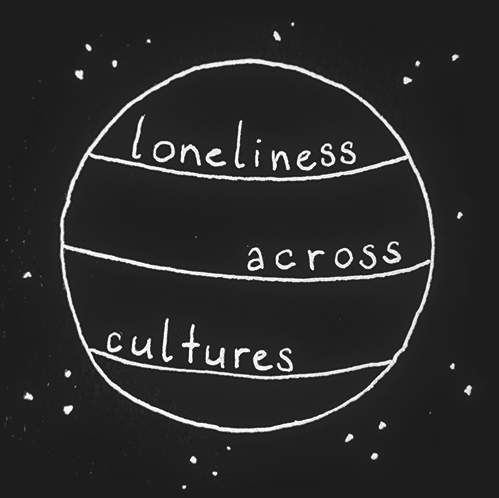
What does it mean if so-and-so many percent feel lonely? A somewhat more technical post about numbers
Over the past years (and even before lockdowns and social distancing), loneliness has become fashionable. People have started talking about it, which is great because feeling lonely has been taboo and stigmatized long enough (admittedly, it still is, but things are starting to change). At the same time, however, this trend opens the door to misunderstandings and some wrong information.
In this (more technical) blog post, I will try to explain why you need to be somewhat cautious when you read that the UK is Europe’s loneliness capital or that Japan is severely struggling with loneliness. And what to conclude if some scientific studies suggest that 10% of Dutch adults feel very lonely, while others tell you it’s only 2.7%.
Problem 1: Loneliness is invisible
As real as your loneliness might feel, I will hardly tell you anything new when I write that loneliness is invisible. I cannot measure some blood parameter to determine that you have a loneliness level of 78 out of 100.
As such, numbers about loneliness are always imprecise because they are based on what people report about themselves. However, some people tend to exaggerate their feelings while others tend to downplay them. Some people say ‘I feel terribly lonely’ if they are feeling quite lonely this weekend, whereas others say ‘I feel a little lonely’ if they have been crying themselves to sleep for the last two weeks.
Also, most people do not feel lonely all the time. When I want to figure out how lonely they are (in general), I will thus need to ask them about their loneliness in some time window in the past. As human beings, we, however, have selective memories. Depending on our current mood, previous life experiences, expectations, attitudes etc., we select and filter out the things that we pay attention to. This then also determines what we remember. When we’re feeling down, we often feel as if we were always feeling down. [i],[ii],[iii] If I now ask: ‘How lonely have you been feeling in the last two weeks?’, your answer may strongly depend on how lonely, happy, or depressed you feel right now.
And what is the right question to figure out whether someone is feeling lonely anyway? How lonely do you generally feel? How often do you feel lonely? How lonely have you felt in the last week? How often have you felt lonely in the previous two weeks?
Although we hope that any of these questions will tell us something about how lonely people feel, different such questions can lead to different results. For instance, you may conclude that around 10% of Dutch adults feel severely lonely if you look at data from the Dutch government (from 2016)[iv], but you may conclude that it is only 2.7 % if you look at data from the European Social Survey (from 2014).[v] At closer inspection, you could, however, also notice that participants in the survey by the Dutch government were asked whether they felt seriously or very seriously lonely, whereas participants in the European Social Survey were asked whether they felt lonely most or almost all of the time. That is, what exactly was asked for was different: how seriously lonely people felt versus how much of the time they felt lonely.
[Different questions are probably not the only explanation for these very different numbers (see also Problem 3), but they may help understand this discrepancy.]
In sum, we therefore need to interpret numbers about loneliness with some caution because (1) we have no objective way of telling how lonely one person feels in comparison to another, and (2) the way we ask for it can influence the results we get.
Problem 2: Not everything is loneliness
Above, we have seen that one common way of estimating how lonely people are (at least in psychology) is to ask them about it. At the same time, many media reports and sometimes also scientific articles take a different approach: They try to draw conclusions about loneliness by using observable characteristics such as data about being alone, having few friends, being single, living alone etc.
For example, the article titled “Japan struggles to keep loneliness at arm’s length”[vi] provides data about being single, number of conversations that Japanese reported to have per week, and social interaction outside the family. However, it does not include information about how many people said that they had felt lonely.
(I also once saw a conference presentation in which countries’ suicide rates were used as an indicator of loneliness.)
Across different scientific disciplines, it is indeed common to measure invisible characteristics through related observable characteristics (so-called ‘proxies’). One proxy for the time that people spend alone is, for example, the number of evenings they report to have spent by themselves in the previous week. A different example is the GDP per capita to assess wealth in a country.
Importantly, however, the subjective feeling of loneliness often has very little to do with the objective states of solitude or social isolation (as also explained in this blog post):[1] According to a British media report,[ii] the Office for National Statistics declared the UK the loneliness capital of Europe in 2014. This conclusion was based on findings that British survey participants had reported to have less strong friendships and to be less acquainted with their neighbours than inhabitants of other countries in the EU. This was, however, quite different from data from the European Social Survey – where people were actually asked about their feelings of loneliness.[iii]
It may thus, in fact, be quite tricky to use proxies for loneliness.
Problem 3: So-and-so many percent of whom feel lonely?
And what does it now mean if “30% of Austrians feel lonely”? Despite all the imprecisions regarding how to measure loneliness discussed above, this sounds quite clear: About every third Austrian or 3 out of 10 Austrians feel lonely.
Right?
Well, in a democracy, we do not want to force every citizen to participate in our surveys. Therefore, researchers typically rely on samples (i.e., a selection of people). They ask quite some (e.g., a couple of hundreds or thousands of) people from the group they are interested in about – for instance – their loneliness and can then estimate how many people in that group feel lonely. However, this also means that these estimations can be a little off (and may contribute to explaining why 10% of Dutch adults feel very lonely in one survey, but only 2.7% in another).
Just think of opinion polls before elections: different institutes ask many people about their party preferences, and then try to predict who will win. Nevertheless, their estimations are often different from the actual election results. This can happen if these institutes, for instance, can or do not reach enough members of relevant groups of voters. Estimations are called estimations for a reason: they are just not perfect.
Importantly, this does not make these estimations useless: There are logical reasons to assume that if you take a sufficiently large sample, you can draw conclusions about the “population” it comes from (e.g., all Austrians, all voters in an election). A problem arises if we want these numbers to be very precise: After all, a small difference in votes can have huge implications in elections. By contrast, some percent points difference in loneliness numbers may not really matter in practice.
What can you now take away from all of this? That you might want to be a little cautious when interpreting very small differences in loneliness (e.g., why 11 out of 100 people in your city, but only 9 out of 100 people in your neighbouring city say that they feel severely lonely). If about 10 out of 100 people in a city report that they are lonely, one probably needs to do something about it – but whether it is exactly 8 or 12 may neither reflect reality nor be that relevant in practice.
[1] Also, how suitable the extent to which living or spending time alone is as proxy for loneliness differs by context: For instance, living alone was more strongly related to higher loneliness among elderly people at the beginning than at the end of the 20th century.ix
[i] Koster, E. H., De Raedt, R., Leyman, L., & De Lissnyder, E. (2010). Mood-congruent attention and memory bias in dysphoria: Exploring the coherence among information-processing biases. Behaviour Research and Therapy, 48(3), 219-225. https://doi.org/10.1016/j.brat.2009.11.004
[ii] Rholes, W. S., Riskind, J. H., & Lane, J. W. (1987). Emotional states and memory biases: Effects of cognitive priming and mood. Journal of Personality and Social Psychology, 52(1), 91–99. https://doi.org/10.1037/0022-3514.52.1.91
[iii] Urban, E. J., Charles, S. T., Levine, L. J., & Almeida, D. M. (2018). Depression history and memory bias for specific daily emotions. PloS one, 13(9), e0203574. https://doi.org/10.1371/journal.pone.0203574
[iv] Gezondheidsmonitor Volwassenen 2016, GGD’en, CBS en RIVM. https://www.volksgezondheidenzorg.info/onderwerp/eenzaamheid/cijfers-context/huidige-situatie#node-eenzaamheid-naar-geslacht
[v] Hossain, M., Purohit, N., Khan, N., McKyer, E. L. J., Ma, P., Bhattacharya, S., & Pawar, P. (2020). Prevalence and correlates of loneliness in India: A systematic review. SocArXiv Papers. https://doi.org/10.31235/osf.io/x4ctz
[vi] Hoffman, M. (November 10, 2018). Japan struggles to keep loneliness at arm’s length. https://www.japantimes.co.jp/news/2018/11/10/national/media-national/japan-struggles-keep-loneliness-arms-length/
[vii] Orr, G. (July 3, 2014). Britain has been voted the loneliness capital of Europe – so how did we become so isolated? https://www.independent.co.uk/life-style/health-and-families/features/britain-has-been-voted-loneliness-capital-europe-so-how-did-we-become-so-isolated-9566617.html
[viii] Norwegian Centre for Research Data. (2014). ESS Round 7: European Social Survey Round 7 Data (Data file edition 2.2. NSD) [Data set]. doi:10.21338/NSD-ESS7-2014
[ix] Victor, C. R., Scambler, S. J., Shah, S., Cook, D. G., Harris, T., Rink, E., De Wilde, S. (2002). Has loneliness amongst older people increased? An investigation into variations between cohorts. Ageing & Society, 22(5), 585–597. https://doi.org/10.1017/S0144686X02008784


